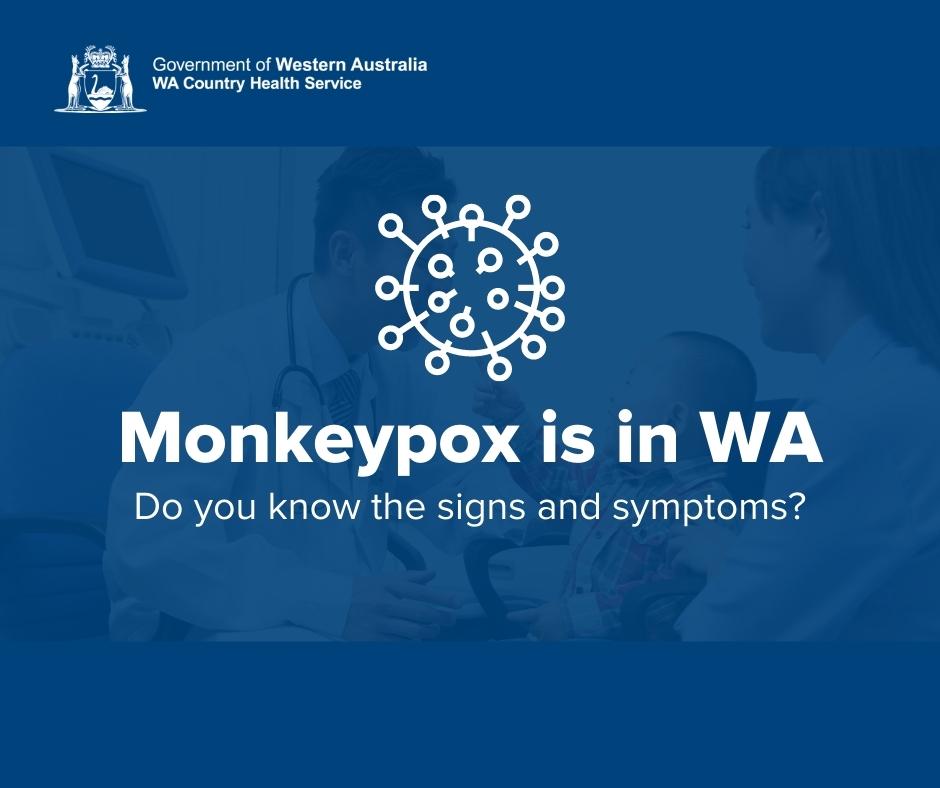Look out for signs of Monkeypox
 Monkeypox is an infection, similar to smallpox, spread through skin-to-skin contact and respiratory droplets.
Monkeypox is an infection, similar to smallpox, spread through skin-to-skin contact and respiratory droplets.
As Australian cases of Monkeypox rise, WA Country Health Service is urging country communities to look out for signs and symptoms and continue their healthy habits.
Monkeypox is an infection, similar to smallpox, spread through skin-to-skin contact and respiratory droplets.
Many of the cases in the current outbreak are in men who have sex with men (MSM) and overseas travellers.
Symptoms usually start within three weeks of exposure to the virus and include sores, rash, bumps or painful pimples on the body – most commonly centred on the mouth, face, genitals, palms and soles of feet.
Some people may also develop general viral symptoms including fever, fatigue, aches or swollen lymph nodes.
If you experience these symptoms, you are encouraged to physically distance from others and contact your local GP.
If someone suspects or is confirmed to have Monkeypox, they should isolate, avoid intimate contact with others and for eight weeks following isolation wear condoms during sexual activity.
For more information visit www.healthywa.wa.gov.au/monkeypox (external link).

